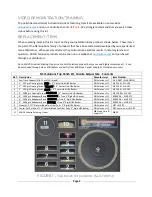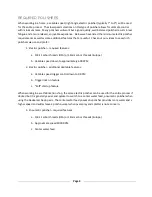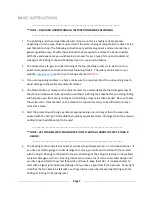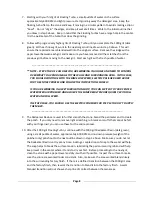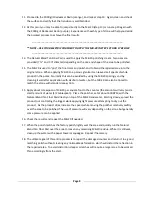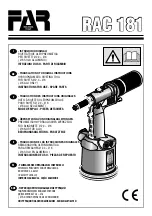
Page 9
11.
Proceed to the 2000 grit Redeemer Resin (orange), and repeat step 10. Again, clean and check
the surface and verify that the transition is well blended.
12.
At this point you may be able to jump directly to the MB-20 (step 13) or run step 10 again with
the 3000 grit Redeemer Resin (purple). Experience with each type of stone will help you decide
the quickest process to achieve the final results.
__________________________________________________________________
** NOTE –USE YOUR ELECTRIC POLISHER TO APPLY THE MB-20 IN STEP 13 THRU 17 BELOW
__________________________________________________________________
13.
The Natural Blend Tan Fiber Pad is used to apply the MB-20 polishing cream. Two sizes are
provided (7 ¾” and 3 ¼” diamter) depending on the size and shape of the area to be polished.
14.
The MB-20 is used to “pop” the final color and polish and to blend the repaired area into the
original stone. When applying MB-20 to a porous granite it can leave small specks of white
product in the pores. Normally this can be avoided by using the MB-20 sparingly and by
cleaning it well after application with alcohol or water, but the MB-20 can also be tinted to
match the stone with standard epoxy tints.
15.
Apply about ½ teaspoon of MB-20 per square foot to the counter (the amounts will vary) and a
small amount of water (1/2 tablespoon). Place the polisher, set at about 600 RPM, with the
Natural Blend Tan Fiber Pad directly on top of the MB-20 and water. Starting slowly, spread the
product out controlling the trigger while applying light pressure attempting to dry out the
product. As the product dries, increase the speed, while moving the polisher relatively swiftly
over the area to be polished. The use of pressure will vary depending on the stone but generally
some pressure can be applied.
16.
Check the results and repeat the MB-20 if needed.
17.
When the polish matches the factory polish, lightly wet the area and quickly run the Natural
Blend Tan Fiber Pad over the area to loosen any remaining MB-20 residue. While it is still wet,
clean up the water with a paper towel or squeegee. Repeat if necessary.
18.
The ultimate goal of this entire process is to repair the damaged counter and return it to a good
matching polish without creating any noticeable deformation which will distort the reflection in
the repaired area. To avoid distortion, deeper scratches will require a larger area to be worked.
Plan accordingly from the start.



